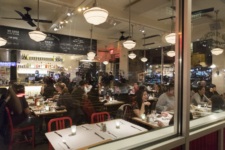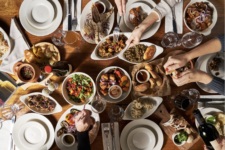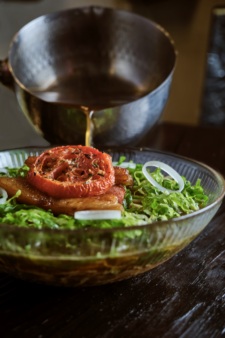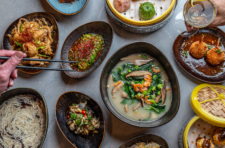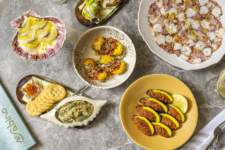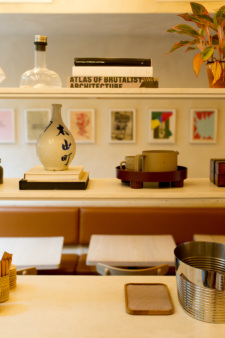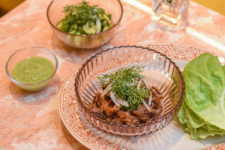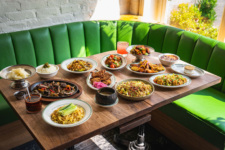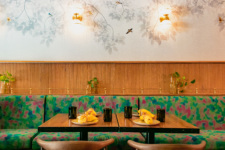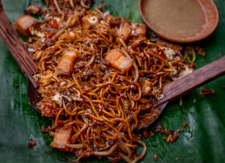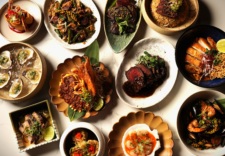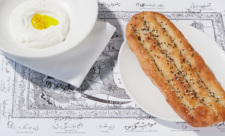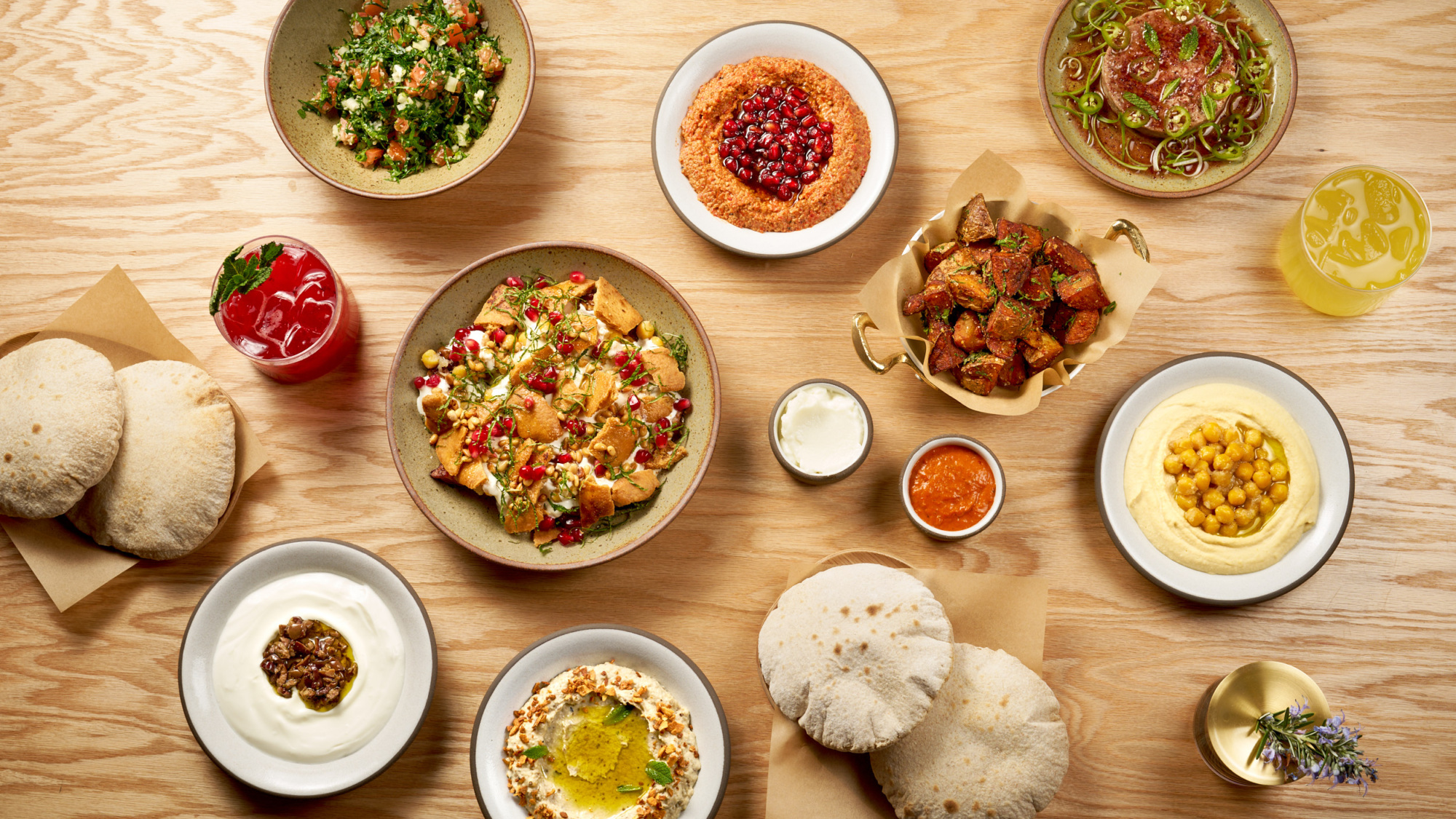
How Sawa Celebrates Lebanese Cuisine and Tradition in New, Unexpected Ways, in Five Dishes
Middle Eastern cuisine has been having a “moment” for the last several years, especially in New York, with restaurants offering Levantine menus that draw from places like Israel, Syria, Turkish, Palestine, and Iran. And while Lebanon has been represented, up until recently, most purely Lebanese restaurants tended to skew traditional, in terms of both the menu and the décor, offering food that didn’t necessarily push the boundaries of what Americans may think of Lebanese food (i.e. falafel and toum).

That’s why when Lebanon-native Samaya Boueri Ziade decided to open a restaurant honoring her home country, she felt strongly about staying authentic and true to Lebanese culture. Still, she wanted someplace modern and elegant that would fit in in Park Slope, the neighborhood she has called home for 15 years, and yet was missing an authentic Lebanese restaurant. Ziade only began cooking after she left Lebanon, as a way to remind herself of home, taking classes and running a few pop-ups until the pandemic hit. When her brother, George Boueri, moved to New York around seven years ago, he eventually decided to join her project on the business side. When the two decided to hire a chef they could share Ziade’s recipes with, they landed on Soroosh Golbabae, an Iranian chef who had cut his teeth at Gramercy Tavern, Sofreh, and Eyval since moving to the U.S., and was happy to discover the similarities and differences between Persian and Lebanese cuisine.
Sawa, which means “together” in Arabic, features a menu of Lebanese classics with a contemporary perspective, combining Ziade’s recipe trove filled with the spices and flavors from the region, along with ingredients from local farmers and producers and Golbabae’s years of technique and professional expertise. Below, Ziade and Golbabae discuss five dishes from Sawa’s menu so diners know what to expect — and what to order.
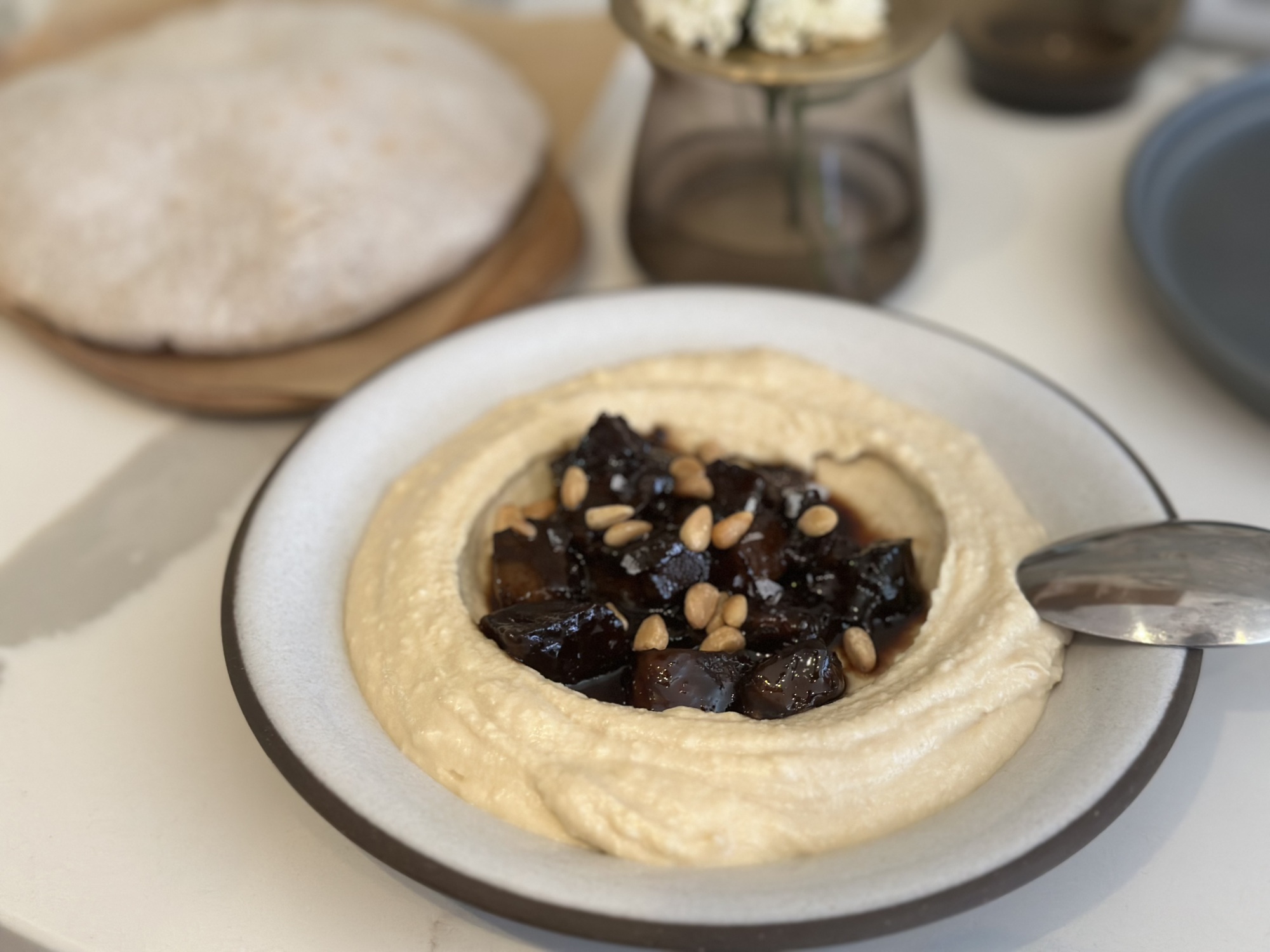

1. Hummus with Beef Cheek and Pine Nuts
Served with pita
While the team is hoping to open up diners to more out-of-their-comfort-zone dishes, the hummus is still Exhibit A for them to demonstrate Lebanese cuisine — and it’s made with Lebanese tahini. While the hummus itself is creamy and light with a generous garlic kick, the “wow” moment comes when you add the Wagyu beef cheek, which is sourced from the Midwest.
“Hummus typically is either the classic vegetarian version topped with chickpeas or there’s also versions where it’s topped with either lamb or sometimes it’s ground beef,” says Ziade.
“The preparation [for the beef cheeks] is braising for a couple of hours, so all that fat content does not melt away,” adds Golbabae, who then dices the beef and tosses it with a sauce. “The sauce contains pomegranate molasses, salts, and other spices. You still see the form as a cube but it really complements the texture of hummus, which is very soft and creamy and the meat just melts in your mouth.”
The hummus, and the three other dips on the menu, are all served with fresh-from-the-wood-fired oven sourdough pita, which guests and passersby can watch being rolled out and baked in the oven in the front window.
“It’s a very warm feeling to walk in and smell bread, and it’s very typical of Lebanon streets, Beirut streets, with all the bakeries,” says Ziade, who adds that their pita is made with a mix of whole wheat and white flours and undergoes a 48-hour fermentation, which is not typical in Lebanon, but brings more of a Brooklyn aspect to the restaurant.
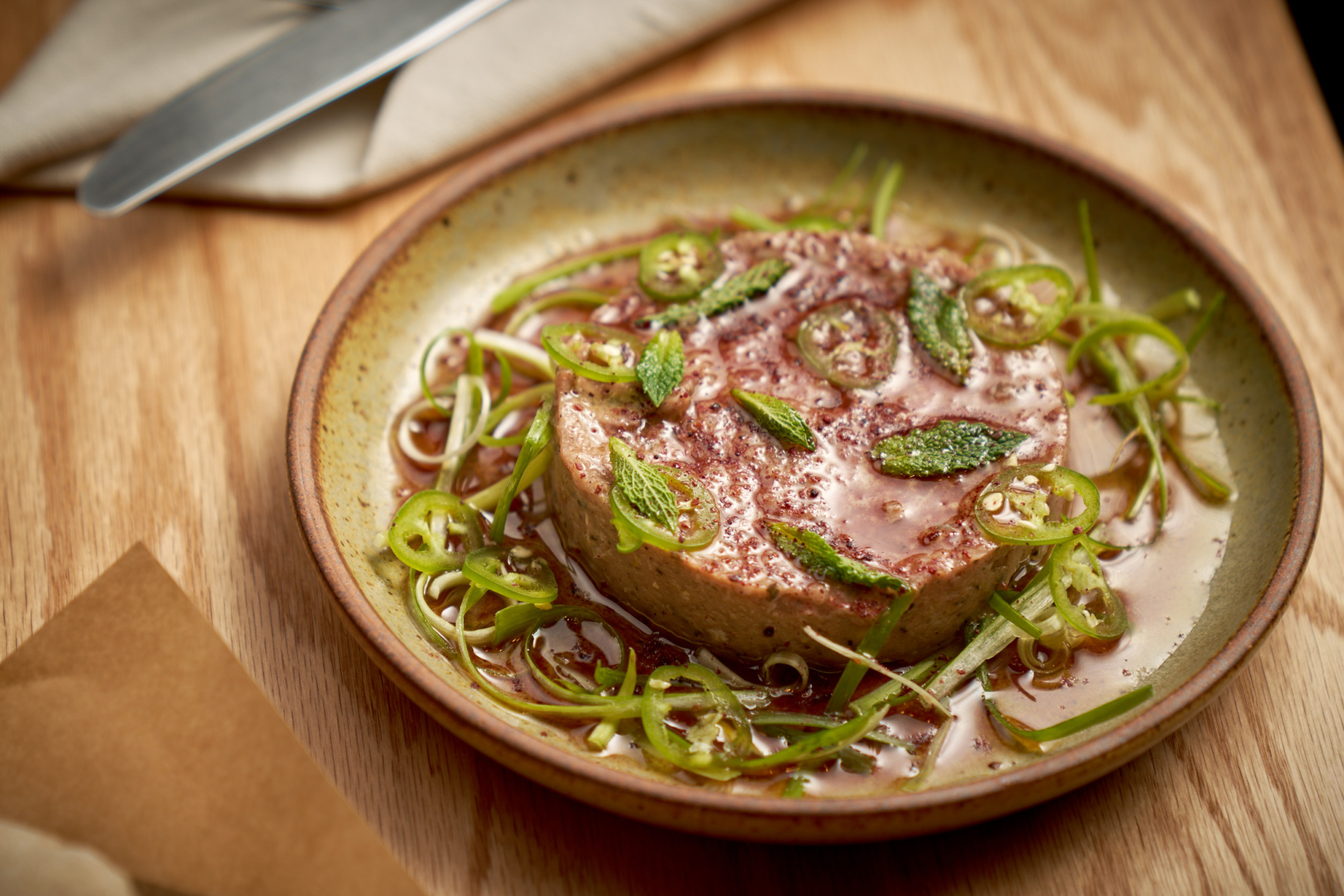
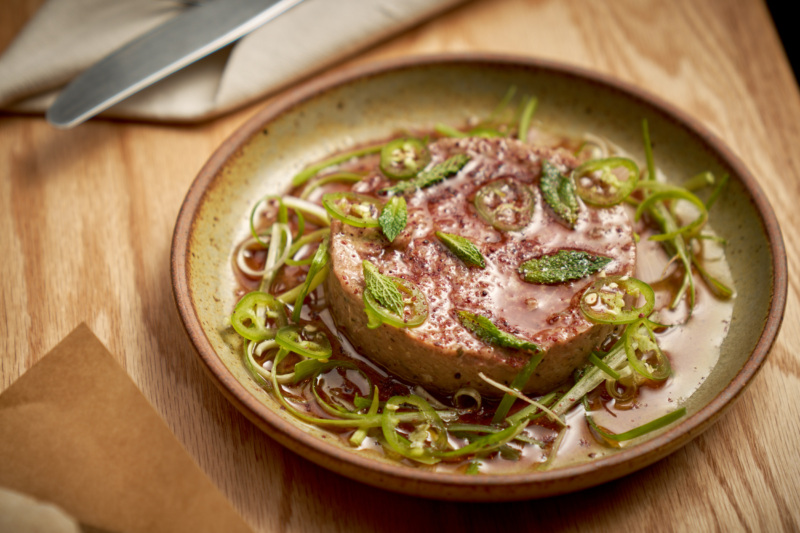
2. Kibbeh Nayeh
While beef tartare isn’t surprising to find on a menu these days, this tartare is made with grass-fed lamb that’s combined with bulgur and Middle Eastern spices like nutmeg and sumac, and served with pita crackers made from that same sourdough pita.
“This is a very traditional dish, from the northern mountains [of Lebanon],” says Ziade. “Traditionally, the women of the village would get together and it’s traditionally mulled in a mortar and pestle; it’s not done in a machine. And then you add the bulgur and the spices.” She adds that in Lebanon, it’s usually served with soft pita, but they liked the contrasting crunch of the crackers.
Golbabae was an instant fan [of the dish] when he first tried it. “Coming from my fine-dining experience and eating in the city, you see all this tartare around the city, and they pretty much have the same thing — same shape, same texture,” he says. “When I tasted nayeh the first time, I was like, this is very interesting. And then when I talked to Samaya about the menu, and did more research, it was like, this has a lot more to say because of all the spices and bulgur itself, there’s a really nice texture to it. It’s not only a focus on the meat, there’s a lot happening.”
He decided to use leg of lamb because of its lower fat content, to cut a little bit of the richness. “And I learned a lot about Lebanese olive oil, which is very rich and it coats your tongue and it’s just amazing,” he says. “I made a sumac oil, that is the red oil that covers the nayeh, and brings a little acidity, as well as different kinds of fats.”
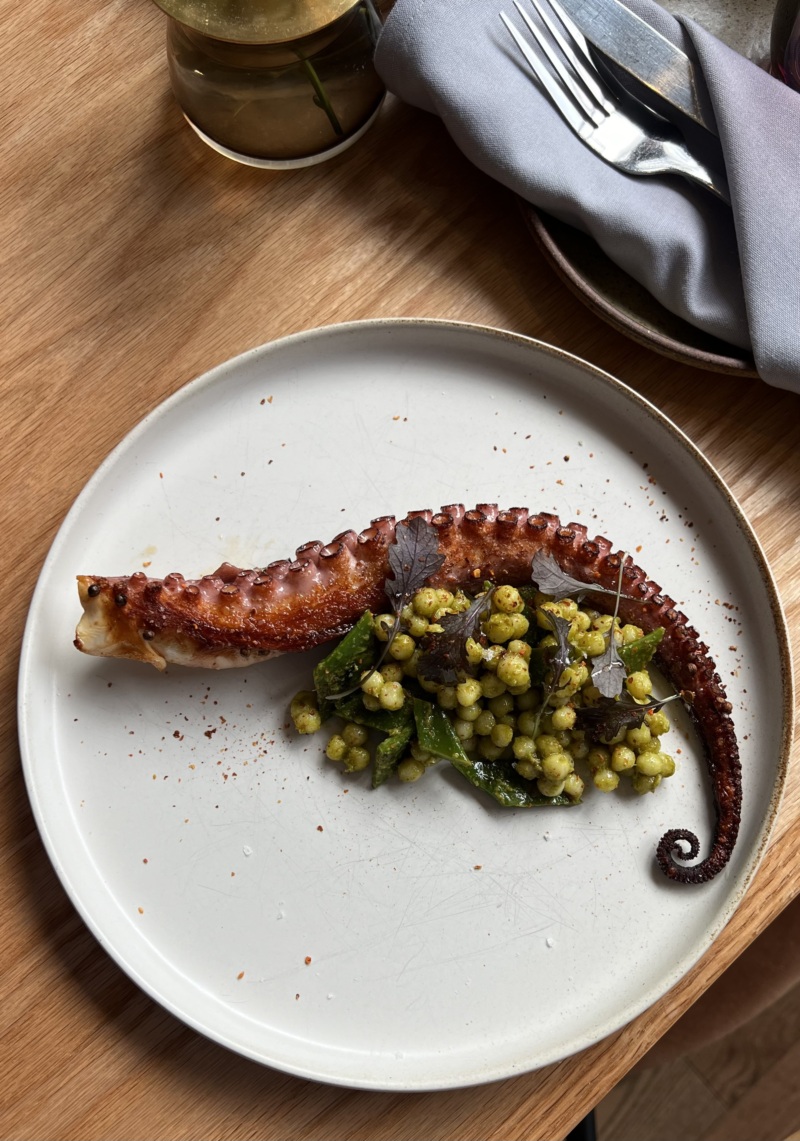

3. Ahktabut
Since Lebanon is on the Mediterranean, seafood features heavily in the cuisine. Ahktabut means “octopus” in Arabic, and this appetizer is a stunning plate of braised, seared octopus served with couscous pearls and charred runner beans in a cilantro garlic dressing. Typically, in this dish, the octopus is sautéed with garlic, cilantro, and lemon, but, says Ziade: “In our version, we chose to tone down the seasoning on the octopus and instead use the couscous to bring the stronger aromas and flavors.”
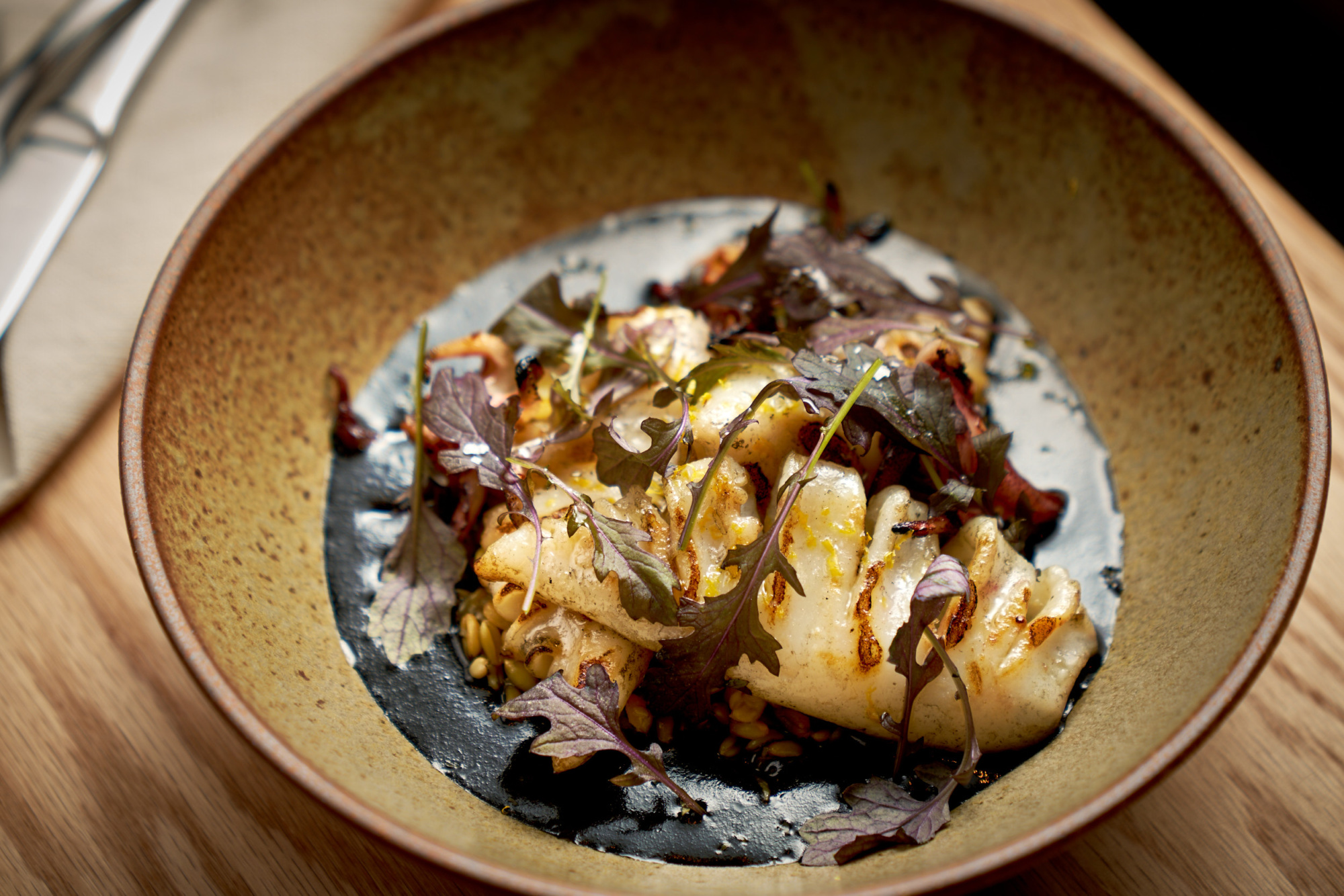
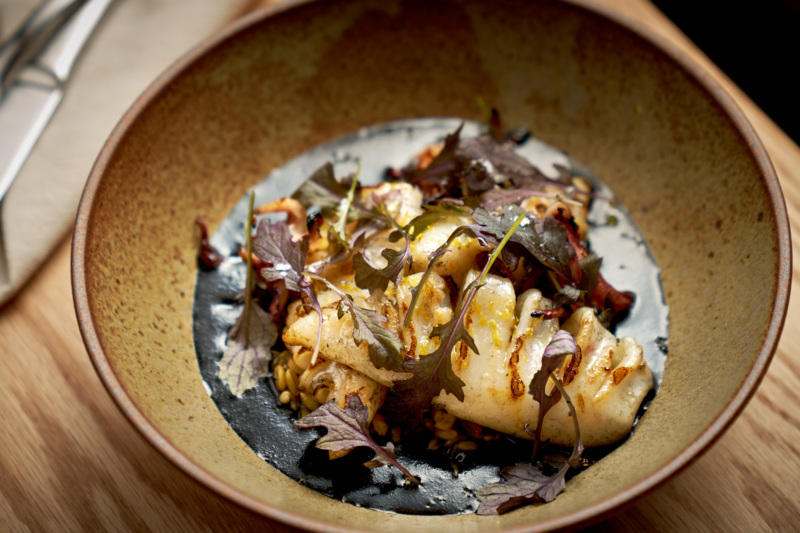
When Sawa isn’t serving this octopus dish, they’ll likely be serving sabbidej (pictured above), which consists of grilled squid cooked in its own ink, served with citrus and freekeh, a green wheat that is popular in Lebanon, Syria, Egypt, and Jordan. Generally, sabbidej isn’t served with freekeh, however.
When Golbabae was working on this squid dish, he was also working on a different dish that was made with freekeh. “I have all this squid in the city, and it’s so dry. So, I grilled and marinated that right away, so it marinated in the juice, with lots of citrus and garlic and olive oil. And then the sauce gets cooked down with a lot of aromatics and spices, and a lot of citrus peels and juice, and the ink is added at the end, and blended to a nice, smooth texture,” explains Golbabae. “And I was like, OK, this dish needs a little starchiness, a little distraction that takes you out from just the void of seafood. I thought of the freekeh, which is just so good — it’s the smokiness and the texture, which really complements the grilled squid.”

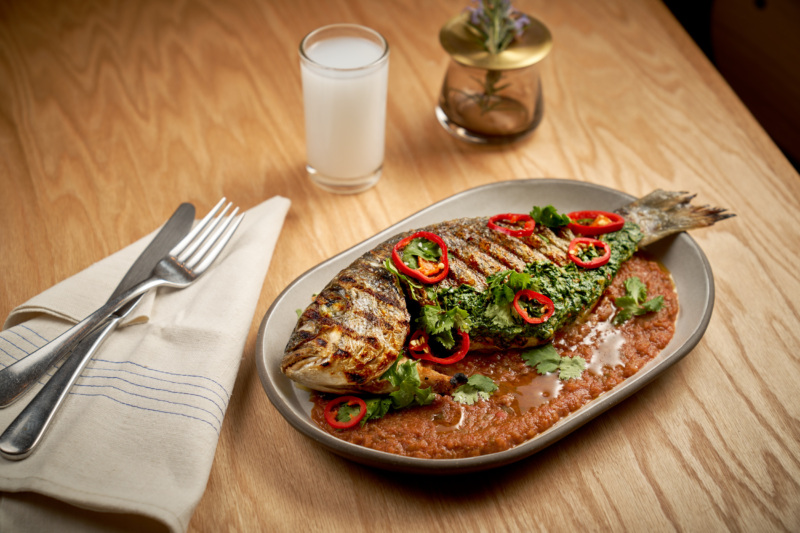
4. Beiruti Samke Harra
Samka harra, which literally means spicy fish, has a few iterations in Lebanon, Zaide says. But this version is Beirut-style, made with a chargrilled, whole dorade fish served in a spicy tomato and pepper sauce and drizzled with cilantro oil. The other style comes from the north, and Ziade hopes to rotate to that version at some point.
“This dish is typical of our big Sunday meal at home,” says Ziade. “Whatever you would get from the fishmonger — we picked dorade because it’s a Mediterranean fish and typical to the region. And then the sauce is really simple but super flavorful, it’s like a spicy tomato pepper stew.”
At Sawa, they’re making their own fish stock and adding that to the sauce, and also using cilantro for brightness at the end, which isn’t traditional; it’s usually folded into the sauce.
“A really nice touch with this fish, and the point is to show the hospitality and care that we have for our guests, is that we debone the whole fish,” adds Golbabae.
What is traditional about the dish, however, are the spices used: a lot of allspice and serrano peppers for spice, and they added a housemade chile powder and topped it with pickled Fresno chiles.
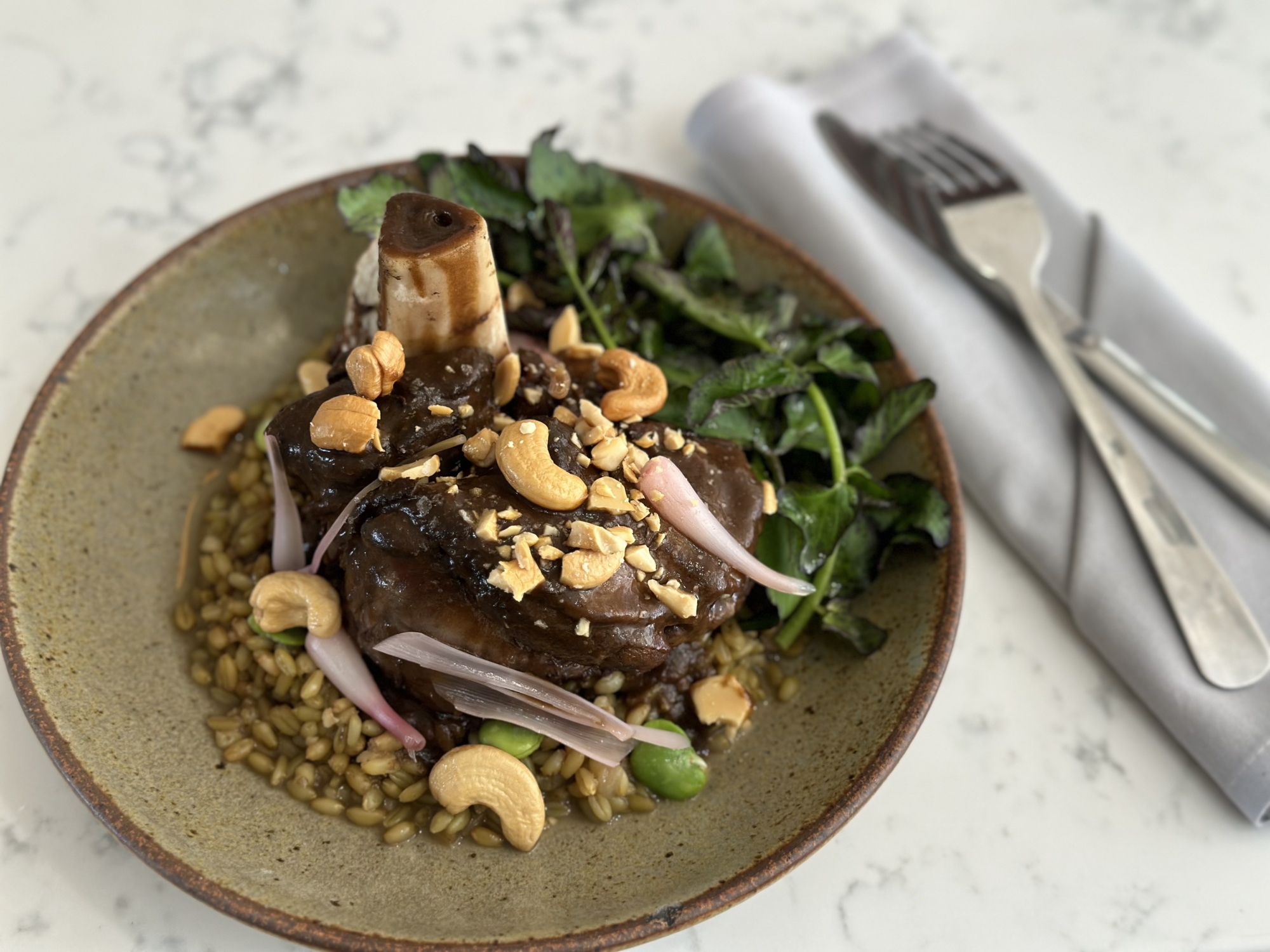
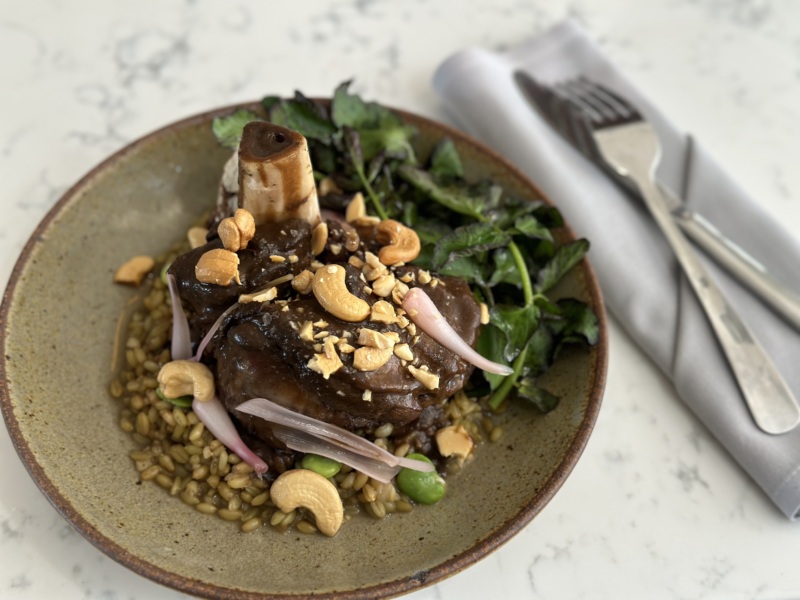
5. Lamb with Freekeh
If you’re craving a hearty stew with tender meat, this is it. This is a hearty dish consisting of braised lamb shank served on a bed of freekeh and fava beans. In Lebanon, it might be served for a celebration, but it also appears often at any large family meal.
“Freekeh is wheat that is harvested while it’s still green, then roasted, giving it a hearty, smoky flavor. It is cooked with a mix of spices and topped with a black garlic sauce, pickled ramps, toasted cashews, and lemony watercress,” explains Ziade. “This is a traditional dish, but we added our own touch by topping it with black garlic sauce and pickled ramps. The dish has an earthy, smoky flavor from the spices and freekeh.”
Sawa is open from 5:30 to 11 p.m. Wednesday through Sunday.
Devorah Lev-Tov is a food, beverage, wellness, and travel journalist with bylines in The New York Times, Food & Wine, Bon Appétit, Eater, Vogue, and more. She is the author of the recent book, 150 Spas You Need to Visit Before You Die. She lives in Brooklyn with her husband, two children, and senior shih-tzu. Follow her dining adventures (usually at a reasonable hour) on Instagram. Follow Resy, too.
Discover More

Stephen Satterfield's Corner Table





